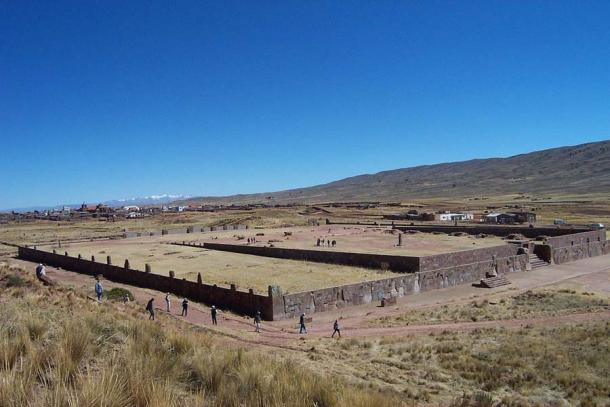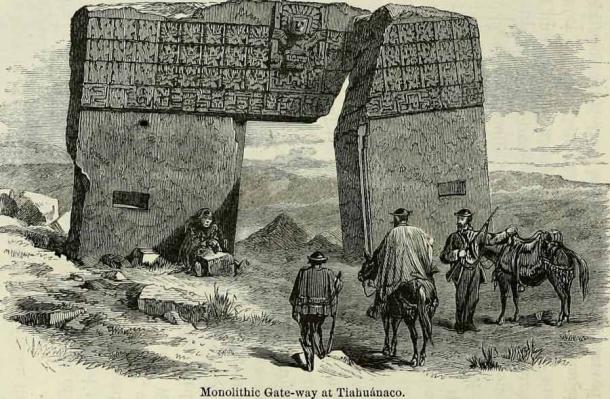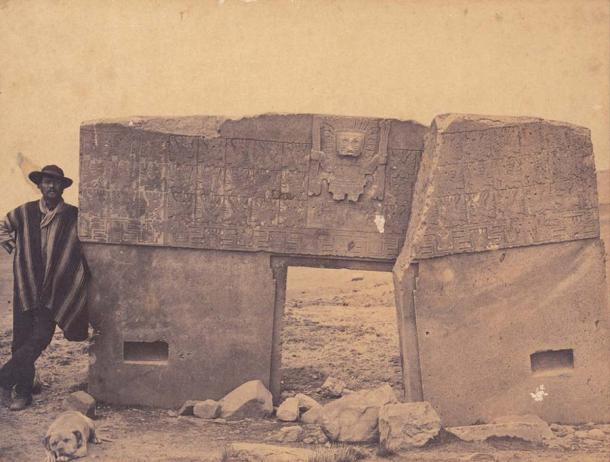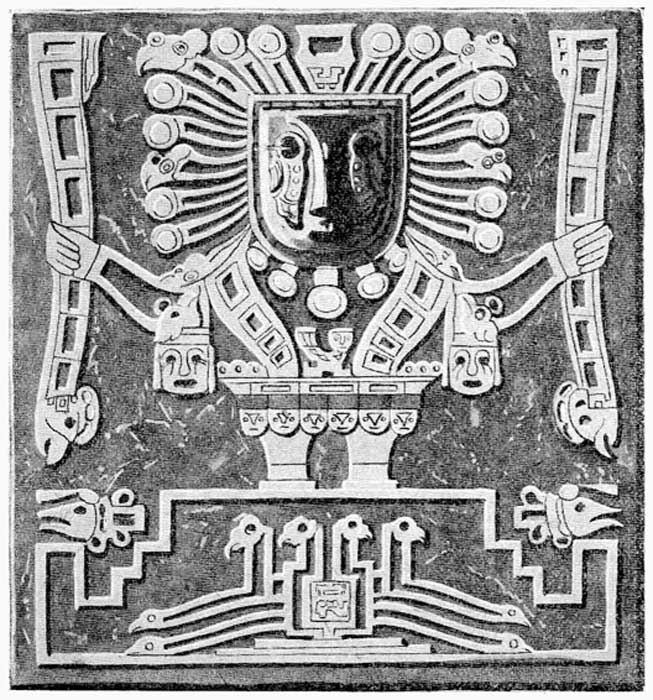On the southern shore of Lake Titicaca in Bolivia, at an altitude of 3,825 meters (12,549 ft), lies the ancient city of Tiahuanaco. Also known as Tiwanaku, this was once the capital of an empire that extended into present-day Peru and Chile, home to a pre-Colombian culture which flourished from 300 to 1000 AD and believed to have been one of the most important cities of ancient America. Within the ruins of its enormous courtyard, archaeologists discovered a mysterious megalithic structure which is known known as the Tiahuanaco Sun Gate.

The archaeological site at Tiahuanaco, where the Tiahuanaco Sun Gate was discovered. (Public domain)
Putting Tiahuanaco into Context
Andean legends claim the area around Lake Titicaca was the cradle of the first humans on Earth. According to these myths, Lord Viracocha, the creator of all things, chose Tiahuanaco as the place of creation. The archaeological site covers as much as 4 square kilometers (1.54 sq mi). This planned city was once home to as many as 20,000 people at its peak around 500 to 900 AD.
The city was made of impressive carved stones and there was a complex underground drainage system. Nevertheless, because they left no written records, Tiahuanaco continues to perplex archaeologists who try to unravel its mysteries from the monolithic remains and scant artifacts.
These days, Tiahuanaco is located about 250 meters (800 ft) above the level of Lake Titicaca, but most archaeologists agree that it was once a port. Structures have been found in Lake Titicaca which show that the sea levels have changed dramatically throughout history. The site at Tiahuanaco is made up of stone structures and blocks, as well as large carved stone figures. Of these, one of the most impressive is the Pyramid of Akapana which rose to over 18 meters (59 ft).
The age of the ruins is also up for debate. Originally researchers suggested that the Tiahuanaco ruins dated back to 14,000 BC, but more recent methods have led them to believe that it was founded some time between 300 BC and 110 AD. The many unknowns at Tiahuanaco have opened the gates to pseudo archaeologists and their varied theories, claiming that Tiahuanaco and its monoliths were created by giants or even extraterrestrials.

The Monolithic Gate of the Sun at Tiahuanaco in Bolivia, drawn by Ephraim Squier in 1877. (Public domain)
The Discovery of the Tiahuanaco Sun Gate
The site of Tiahuanaco in Bolivia was first recorded in 1549 by Pedro Cieza de León. When rediscovered by European explorers in the mid-19th century, the monolithic Tiahuanaco Sun Gate was lying horizontally on the ground with a large crack running through it within what is now known as the Kalasasaya Complex, a ceremonial palace.
Measuring 3 meters (9.8 ft) tall by 4 meters (13 ft) wide, the Gate of the Sun is a gigantic arch carved into one single block of andesite volcanic stone. Said to weigh at least 10 tons (9072 kg), it can be viewed today where it was found, although it is believed that this is not its original location, which remains uncertain.

1877 image of the Tiahuanaco Sun Gate in Bolivia. (Public domain)
What Was the Tiahuanaco Sun Gate Monument Used for?
In truth, the Tiahuanaco Sun Gate has baffled experts since it was first discovered. The figures that decorate the stone are believed to have astronomical connotations and resemble human-like beings with wings and curled-up tails, and appear to be wearing rectangular helmets, although interpretations differ.
The god, possibly the Incan god Viracocha or a sun god of some kind, is located in the center and is sculpted with rays emitting from his face in all directions. He also appears to be holding a staff in each hand. This sun god figure is also known as the “Weeping God” because things similar to tears are carved on its face.
Some have argued that the Tiahuanaco Gate of the Sun was used as a calendar, causing them to call it the Calendar Gate. Indeed, it appears to reflect a solar year, however, it cannot be made to fit into the solar year as we divide it at present. The calendar has 290 days, divided into twelve months of 24 days each. Other radical theories suggest it was a portal to another dimension, perhaps to the land of the gods, and some even believe that it was created by aliens!

Detail of the so-called Sun God on the monolithic Tiahuanaco Gate of the Sun in Bolivia. (Public domain)
Visiting Tiahuanaco Sun Gate in Bolivia
Taking into account that Andes myths point to Tiahuanaco as the place of creation, it is certainly an important place to visit. Located 70 km from La Paz in Bolivia, about an hour by car, the archaeological site is open from 9 a.m. to 4 p.m. and there is a fee to enter. There are two museums within the enclosure.
Located at such a high altitude, the climate can change suddenly. Wear comfortable clothing, take warm clothes, and make sure to bring lots of water and sun cream. The best time to visit the Tiahuanaco Sun Gate is early in the morning. While you can visit alone, we’d recommend a guide to really get the most out of your visit.